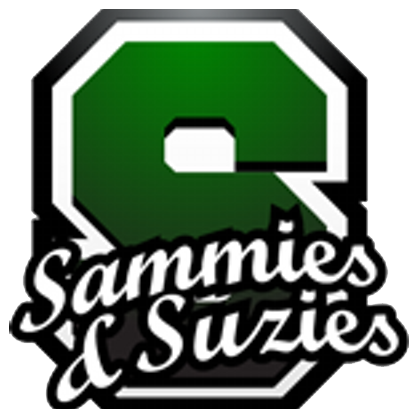Grade 4
Grade 4 Standards |
LANGUAGE ARTS |
Language |
Determines the meaning of vocabulary words using context clues/dictionary |
Recognizes that words are made up of parts (roots, prefix, suffix) and can identify those parts |
· Expresses ideas clearly |
Reading/Literature |
· Reads grade level text with fluency, accuracy, appropriate pacing and expression |
· Locates and summarizes the main idea and supporting details in literary/expository text |
· Identifies story elements (plot, characters, setting, theme), dialogue and sensory images in text |
· Makes judgments about elements from text and supports with evidence from text |
Identifies the speaker in a text |
Identifies characteristics of various genres (fiction, nonfiction, poetry, drama) |
Composition |
· Writes pieces which clearly communicate ideas for different purposes (imaginary/informational) and audiences |
· Creates multi-paragraph compositions with correct paragraph form |
· Edits/revises drafts of writing |
Conventions |
Identifies and uses 4 main parts of speech (noun, verb, adjective, adverb) |
· Punctuates accurately (end marks, commas in a series) |
Capitalizes accurately (beginning of sentence, proper nouns) |
Identifies and applies correct sentence structure |
Applies spelling rules |
MATHEMATICS |
Numeration/Operations |
Names the place value of digits in numbers to the hundred millions |
Demonstrates an understanding of whole numbers to hundred thousands |
Orders and compares whole numbers to hundred thousands |
Adds and subtracts multi-digit numbers |
Demonstrates mastery of basic multiplication facts |
Demonstrates mastery of basic division facts |
Reads and writes numbers to the hundred millions in word, standard and expanded form |
Rounds whole numbers to a given place |
Orders and compares decimals to hundredths |
Uses dollars and cents notations |
Multiplies (up to 3 digit by 2 digit numbers) |
· Names fractional parts of a set |
· Names the whole for fractions |
· Divides 3 digit by 1 digit numbers |
Patterns, Functions, Algebra |
· Writes and solves number sentences using +, -, ´, ¸, <, >, = to represent mathematical relationships |
Creates, describes, and extends patterns |
Geometry |
Identifies, describes and classifies two-dimensional shapes by various attributes |
Identifies, describes and classifies three-dimensional shapes by various attributes |
Identifies and names points, lines and angles |
Identifies and names angles |
Identifies and draws line(s) of symmetry in two dimensional shapes |
Measurement |
Measures to nearest ½ inch and centimeter |
Measures to nearest ¼inch and centimeter |
· Computes elapsed time using a clock and a calendar |
· Calculates area and perimeter of various polygons using diagrams, models and grids or by measuring |
Demonstrates an understanding of such attributes as length, width, area and weight using both metric and U.S. customary units |
Data Analysis, Statistics, and Probability |
Collects and organizes data using observation, measurement, survey or experiment and identifies appropriate ways to display data |
· Represents the possible outcome for a simple probability situation |
· Explains math thinking using pictures, words and/or numbers |
SOCIAL STUDIES |
Recognizes major historical sites and monuments in Washington, D.C. |
Interprets maps using map symbols and keys |
Locates the seven continents and four oceans |
Locates major physical features of North America (United States, Canada and Mexico) |
Describes climate, natural resources, native people and physical features of North America (United States, Canada and Mexico) |
Identifies states, capitals and major cities for each United States region |
Identifies and describes the five major European countries that influenced American culture |
Identifies the major immigrant groups that live in the United States |
SCIENCE |
Identifies the parts of the solar system (sun, planets, moon) |
Demonstrates an understanding of the movements of the earth (orbit and rotation) |
Describes the phases of the moon |
Differentiates between weather and climate |
Demonstrates an understanding of weather concepts |
Describes the earth’s water cycle |
Describes the life cycle of a frog |
Demonstrates an understanding of the adaptations of organisms |
Differentiates between the basic properties of each state of matter |
Makes observations, records and interprets data |
Understands and applies the engineering design process |
PHYSICAL EDUCATION |
Demonstrates competency in a variety of locomotor and non-locomotor skills as an individual or in a team setting |
Demonstrates responsible personal and social conduct used in physical activity settings. |
Shows understanding of game concepts and strategies |
Demonstrates coordination through physical activities |
Performs exercise and physical fitness activities |
ART |
Demonstrates and understands the ability to observe, abstract and invent in a variety of materials and techniques |
Explores and experiments with color including expression and symbolism |
Demonstrates the process of drafts, self assessment and craftsmanship |
Demonstrates and understand general categories such as painting, drawing, collage and sculpture |
Creates a variety of 2D and 3D artwork from imagination to tell a story |
MUSIC |
Sings in tune |
Sings using appropriate techniques for sound production |
Plays recorder with steady beat, correct rhythm and fingering |
Plays recorder using appropriate techniques for sound production |
Reads standard symbols of notation, rhythm and pitch |
COMPUTERS |
Uses tools appropriately and independently |
Uses digital media to communicate and work collaboratively |
Locates, organizes and evaluates information from a variety of digital resources and media |
Practices safe and responsible use of technology |
Transfers current knowledge to learning of new technology |
